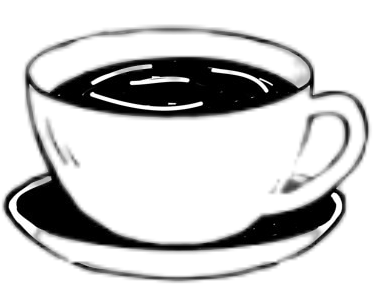As an avid coffee enthusiast, I've often pondered: What exactly separates coffee from espresso? Though both are crafted from the same beans, the distinctions between them in taste, texture, and caffeine content are profound. The secret lies in their distinct brewing techniques, preparation methods, and serving preferences. Uncover the advanced capabilities of the Philips 5500 LatteGo review
Both coffee and espresso can be made from Arabica or Robusta beans, brewed by mixing ground beans with water. However, the specific brewing processes, grind sizes, and flavor characteristics set these two apart. Grasping these differences allows you to better appreciate each drink, whether you're a casual coffee drinker or a true espresso lover. Get a closer look at the features of the Philips 5400 LatteGo review
Brewing Methods: A Fundamental Distinction
The primary difference between coffee and espresso lies in their brewing methods, directly affecting their taste, texture, and caffeine content. Explore our top picks in the Best Automatic Espresso Machine review
For traditional coffee, common brewing methods include drip coffee makers, pour-over setups, or the French press. These techniques involve hot water filtering through coarser grounds over several minutes, resulting in a mild and smooth drink that appeals to many. Find the perfect machine to beat the heat in the Best Iced Coffee Maker review
Espresso, however, is made by forcing nearly boiling water through finely ground coffee at around 9 bars of pressure. This high-pressure process takes only 25-30 seconds, yielding a small, concentrated shot with a rich flavor and a creamy, golden crema layer. Dive into the best options for making lattes in the Best Latte Maker review
If regular coffee is akin to a leisurely soak in the tub, espresso is more like an invigorating, high-powered shower.
Grind Size and Bean Consistency
The grind size plays a crucial role in defining the outcomes of both coffee and espresso.
For regular coffee, a coarser grind is ideal. The slower brewing process necessitates this consistency to extract flavors evenly without the risk of over-extraction, which can lead to bitterness.
Espresso, in contrast, requires a much finer grind. This finer consistency allows for optimal flavor extraction during the brief but high-pressure brewing process, resulting in a dense and flavor-packed shot.
I learned this firsthand when I mistakenly used a coarse grind to brew espresso at home. The resulting weak and watery flavor taught me just how important it is to use the appropriate grind size for each brewing method.

Flavor Profiles: Mild and Smooth vs. Bold and Robust
One of the most remarkable aspects of coffee is its versatility in flavor. A pour-over can highlight delicate floral notes, while a French press might bring out rich, earthy undertones. Due to the slower extraction process, regular coffee is typically smooth, mild, and balanced.
Espresso, however, offers an intense, bold flavor experience. The pressurized brewing method yields a robust taste with a thicker texture. Depending on the beans used, espresso can feature intricate notes of chocolate, nuts, or fruit.
When I'm looking for a soothing beverage to sip and enjoy, I go for coffee. But when I need a quick burst of flavor, nothing beats a shot of espresso.
Caffeine Content: Ounce for Ounce
Espresso's bold taste might make you think it contains more caffeine, but the answer is more nuanced.
Espresso does indeed contain more caffeine per ounce. A single shot (1 ounce) contains around 63 milligrams of caffeine, while an 8-ounce cup of drip coffee has about 95 milligrams. However, because espresso is consumed in smaller quantities, a full cup of coffee generally provides more caffeine overall.
If I need sustained energy throughout the morning, I choose a cup of coffee. But if I need a quick pick-me-up, a shot of espresso works wonders.
The Signature Crema of Espresso
One feature that distinctly sets espresso apart is the crema—the golden-brown foam that sits atop a well-made shot. This layer forms when pressurized water emulsifies the coffee's natural oils, adding depth and complexity to the texture.
Regular coffee lacks crema because it isn't brewed under pressure. Personally, I find crema not only visually appealing but also an indication of a quality espresso shot.
Versatility: Espresso as a Base
Both coffee and espresso are wonderful on their own, but espresso really shines when it comes to versatility.
While coffee is usually enjoyed black or with milk, it isn't commonly used as the foundation for other beverages. Espresso, on the other hand, serves as the base for numerous popular drinks such as lattes, cappuccinos, macchiatos, and Americanos. Its rich and concentrated flavor pairs perfectly with steamed or foamed milk, making it the backbone of many beloved cafe offerings.
I enjoy experimenting with different espresso-based recipes at home, tweaking flavors and textures to match my mood.

Conclusion: Choosing Between Coffee and Espresso
While coffee and espresso share the same origin, their distinct brewing methods, grind sizes, and flavor profiles make for entirely different experiences. Coffee's slow brewing process results in a smooth, mild drink perfect for relaxing moments, while espresso's high-pressure extraction delivers a bold, concentrated shot ideal for a quick boost or as a base for creative drinks.
Ultimately, whether you choose coffee or espresso comes down to your personal preference and mood. For a mellow, leisurely experience, coffee is always a classic choice. But when you're in the mood for something intense and flavorful, espresso is unmatched. Personally, I love alternating between the two, enjoying their unique qualities and savoring the endless possibilities they bring to my daily coffee rituals.
